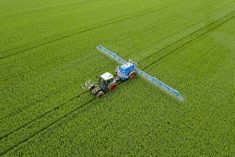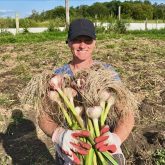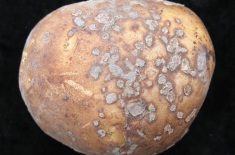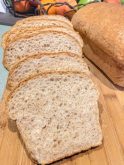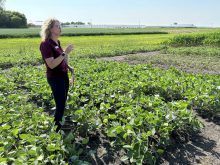Think you’ve got pest problems?
In Malawi, termites living in the soil cause headaches for corn farmers because they “fell” the crop at the base of the stalk.
“It’s like having beavers in there,” Jill Clapperton said in a presentation on the benefits of cover crops and living mulches at the recent Organic Connection conference.
“They don’t eat the grain. They fell the cornstalks so that they dry out and they can consume them.”
Spraying them would be unwise, because the chomping insects play a key role in nitrogen mineralization.
Read Also

CUSMA access key among other trade noise: Seeds Canada panel
Seeds Canada conference panelists say Canada needs to stay focused and wait as U.S. trade and tariff chaos develops, and a Canada-U.S.-Mexico Agreement review looms
The solution was to let crop residues build up. This provides alternative food that termites prefer and also increases beneficial insect populations and keeps nutrient mineralization going throughout the wet and dry seasons, which maintains soil fertility, said the owner of EarthSpirit Land Resource Consulting who often works on agronomic projects in the African country.
This type of problem solving holds lessons for “recovering conventional farmers” who want to reduce their dependence on pesticides, said Clapperton, a fan of mimicking nature’s biodiversity by seeding cover crops and living mulches, and paying attention to what’s going on below the surface.
When trying something new, it’s important to make decisions based on science, she added, because appearances can be deceiving.
On one field tour of a diverse crop mixture containing flower species, she overheard a farmer muttering, “This just looks like crap! What’s all this stuff between the rows? You’ve got to spray this.”
But that crop outyielded everything else in the area, said Clapperton, who worked as a rhizosphere ecologist for Agriculture and Agri-Food Canada in Lethbridge for 16 years.
Adding more crops and plant species to the agronomic mix — from in-crop strips of flowering plants to underseeded legumes — has “outstanding” potential for successful, weed-free, no-till and organic farming, she said.
“I can do no till without perennial weeds for at least five years of continuous cropping,” said Clapperton.
“I’m not dedicated to never tilling, because I work with a lot of people who do potatoes.”
Integrating cover crops with “tools” such as cattle has many advantages such as additional grazing, improved animal health, and reduced need for mineral supplements.
Success with cover crops requires precise timing. When it’s cold, plant cold-season crops such as wheat, peas and canola, then plant flax or corn when the soil is warm.
“You don’t want your plant roots sitting there in the cold — you want them to grow fast,” she said.
Above ground, flowers attract pollinators, so she broadcasts calendula, persian clover, cosmos, buckwheat, fava beans — or whatever she can get her hands on — in front of the tractor with a crop roller on behind to press the seed into the soil.
She said it’s important to seed only non-competitive species that won’t overwhelm the crop.
People tend to ignore what’s happening below the soil surface, but it’s important to remember that plants “feed the rhizosphere,” she added.
Each plant has its own signature, leaking out organic and amino acids and carbohydrates that send a signal to the critters that make up the soil ecology. Choosing appropriate species allows the grower to target specific nutrients that are needed. By the same token, increasing biodiversity encourages a wider range of beneficial effects.
Lupins, for example, like acidic soil, and send out “pulses” of chemicals to free up normally unavailable phosphorus. Buckwheat has a similar effect.
“Plants have the capability. If we marry them up and get them all compatible, who knows where we can go,” said Clapperton.
You can find a very dramatic example of the benefits of cover crops on the farm of David Brandt, she said. The no-till farmer, who lives in Ohio next to the largest clay pot factory in the United States, has changed his soil type from yellow clay to loam with various combinations of cover crops over the course of 20 years.
Scientists didn’t believe his claims until they dug a series of pits all over his farm.
“Now, if you look at the soil survey, you can actually see his farm because it has a different soil type than everybody else around him,” said Clapperton.
With legume cover crops, Brandt is able to mineralize about 70 pounds of nitrogen per acre each growing season, she said.







